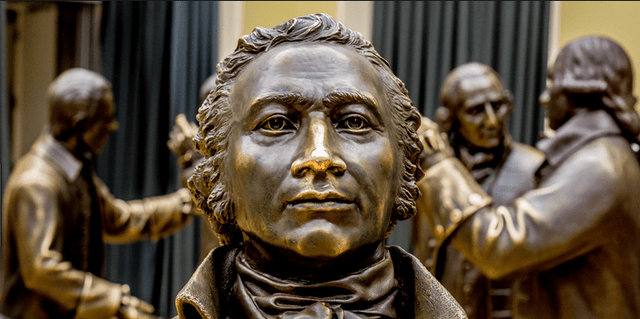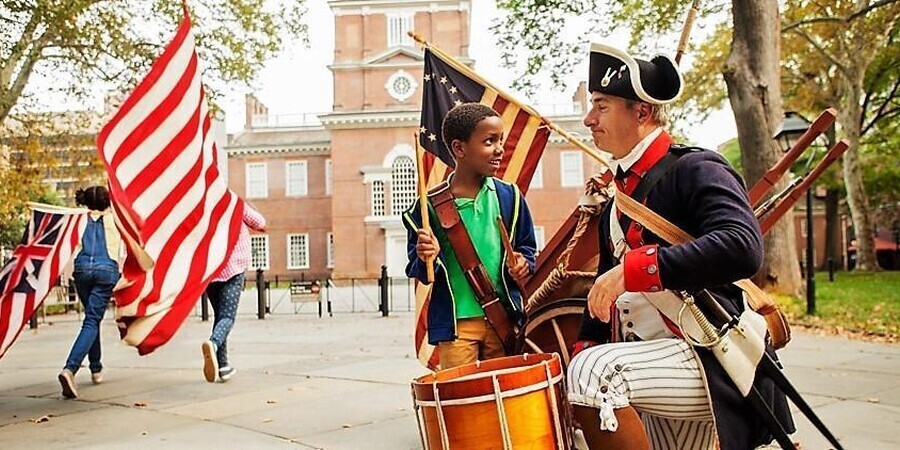Philadelphia, PA - If you're planning a trip to Philadelphia, Pennsylvania, you'll want to learn about the city's rich history. Philadelphia is home to Independence Hall, where the Declaration of Independence was signed, the Liberty Bell, and other important American Revolutionary sites. Philadelphia is also home to the Philadelphia Museum of Art, not outdone. You can visit the iconic steps made famous by Sylvester Stallone in the movie "Rocky."
Journey Through Time: Exploring Philadelphia's Must-See Historic Sites
Philadelphia, the birthplace of American democracy, is a city steeped in history. From the iconic Liberty Bell to the hallowed halls of Independence Hall, the city offers a captivating glimpse into the nation's founding and the events that shaped its identity. Whether you're a history buff or simply curious about America's past, Philadelphia's historic sites provide a fascinating journey through time.
1. Independence National Historical Park
No visit to Philadelphia is complete without a trip to Independence National Historical Park. This UNESCO World Heritage Site encompasses several iconic landmarks associated with the American Revolution and the birth of the nation.
- Independence Hall: Step into the hallowed halls where the Declaration of Independence and the U.S. Constitution were signed. Guided tours offer insights into the debates and decisions that shaped the nation's founding.
- Liberty Bell: See the iconic symbol of American freedom and learn about its history and significance.
- Other Sites within the Park: Explore the National Constitution Center, the Second Bank of the United States, and Benjamin Franklin's house, all located within the park's boundaries.
Tips for Visiting:
- Purchase tickets in advance: Especially during peak season, booking tickets online can save you time and ensure your entry.
- Consider a guided tour: Park rangers and knowledgeable guides offer insightful tours that enhance your understanding of the park's historical significance.
- Allow ample time: There's much to see and explore within the park, so plan to spend several hours to fully appreciate its offerings.
2. Betsy Ross House
Step into the home of Betsy Ross, the legendary seamstress credited with creating the first American flag. Explore the restored 18th-century house, learn about Betsy Ross's life and contributions, and see the iconic flag she crafted.
Tips for Visiting:
- Visit the museum: The on-site museum offers exhibits on Betsy Ross's life, the history of the house, and the evolution of the American flag.
- Explore the Betsy Ross Shop: Find unique souvenirs and gifts related to Betsy Ross and American history.
3. Carpenters' Hall
This historic building, designed by Robert Smith in the 18th century, served as a meeting place for the First Continental Congress in 1774. Admire its unique brick facade, explore the exhibits on early American carpentry, and see the replica chair where Peyton Randolph presided over the Congress.
Tips for Visiting:
- Look for the Flemish bond brickwork: This distinctive pattern, resembling a checkerboard, is a common feature in Philadelphia architecture.
- Explore the exhibits: Learn about the history of carpentry and the tools used in the construction of Carpenters' Hall.
4. Laurel Hill Cemetery
This historic cemetery, founded in 1836, is the final resting place of many prominent Philadelphians. Explore the serene grounds, admire the intricate tombstones and monuments, and learn about the city's history through the stories of its residents.
Tips for Visiting:
- Take a guided tour: Learn about the cemetery's history and the notable figures buried there.
- Respect the solemn atmosphere: Remember that this is a place of remembrance and respect the quietude of the grounds.
5. Benjamin Franklin Museum
Delve into the life and legacy of Benjamin Franklin, one of America's Founding Fathers, at the Benjamin Franklin Museum. Interactive exhibits showcase his inventions, writings, and contributions to science, politics, and American society.
Tips for Visiting:
- Explore the interactive exhibits: Engage with hands-on displays and learn about Franklin's diverse accomplishments.
- Check for special events and programs: The museum often hosts lectures, workshops, and family-friendly activities.
6. Independence Hall
Located in the heart of Philadelphia, Independence Hall is easily accessible by public transportation and is a must-see for any visitor interested in American history.
Tips for Visiting:
- Book tickets in advance: Especially during peak season and holidays, booking tickets online can help you avoid long lines.
- Visit during the off-season: If you have flexibility, visiting during the off-season can offer a less crowded experience.



